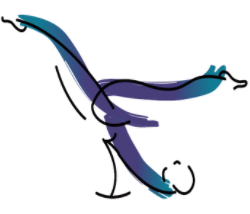Pilates for Professionals: Simple Desk Stretches That Boost Flexibility
Pilates has carved out a niche among fitness enthusiasts in the office professional space, and some may wonder why. Perhaps unfortunately for many spines of the world, desk jobs don’t often require any physical activity.
At least, not any physical activity required by the job itself. Instead, professionals have to make their way if they want to stay physically healthy. Hours upon hours of sitting can turn your vertebrae into a veritable pretzel. Luckily, pilates exercises give professionals a chance to work out right at the desk.
What is Pilates?
Pilates is a low-impact exercise style that works the whole body to strengthen muscles, improve balance, and enhance flexibility. Emphasis on low-impact, because that’s where Pilates earned its reputation. When people think of workouts, they often think of weights or high-intensity sets.
Life is busy, and it’s difficult to get into the rhythm of a regular gym routine. Not to mention, going into a fitness binge without a plan may result in injuries. In contrast, Pilates is simple, can be done from anywhere, and you can feel the results quickly if you’ve been dealing with back pain for a while.
It is especially suited for the office environment, where there’s not much space for any complex workouts.
Why Pilates Works for the Office
The biggest issues an average office worker will face are rounded shoulders, bent backs, and tight hips. For young folks entering the workforce, they may not feel the impact of constant slouching and sitting for a few years.
But as they get older, all that sitting will start taxing the body. That bent back will start to ache whenever you get up from your chair. Those rounded shoulders will feel stiff as you reach for that pen across the desk. Even sitting will feel awkward, as tight hips inhibit you from pivoting in your own chair.
Pilates workouts solve all that by working every single muscle affected. Through gentle and methodical movements, pilates exercises essentially “oil” those unused muscles and joints. Many doubters are often surprised by their range of motion after a month or two of consistent pilates workouts.
If you have an adaptable workstation desk at the office, then even better. These are well suited for an active professional, as they provide a versatile setup whether you’re sitting or standing. That means you can perform some of the more strenuous pilates stretches.
During breaks, after four hours of sitting, slightly more active hip twists and neck rotations can get those joints smoothed out. The point being, pilates is great because it helps you stay healthy in a place where that’s typically not easy to do.
Best Beginner Stretches for Pilates
Seated Spine Twist
The seated spine twist is a fantastic exercise for those who want a workout while stuck in a swivel chair. Sit up straight and plant your feet flat on the floor, about as wide as your shoulders.
Inhale deeply, then push out your chest. As you do, push your hips down. A mild yet comfortable stretch should greet you with this position. From there, slowly breathe out as you twist to the left.
Go back to the neutral stance and twist in the opposite direction. You can do this exercise as many times as you feel like, until soreness and stiffness are reduced. If you want a tight number, try ten seconds per stretch.
Dynamic shoulder rolls
For stiff shoulders, dynamic shoulder rolls are a wonderfully active exercise. This can be done seated or standing. Keep your spine straight, and place your hands atop your shoulders. Rotate your shoulders slowly forward ten times, breathing in and out slowly through the whole process.
After ten forward rolls, rest for 30 seconds. After the rest, repeat the process, but this time roll your shoulders backwards. If you have the arm space, you can put your hands out like a plane while rotating to stretch more of the upper back and biceps.
Seated Figure Four Stretch
Tight hips can be untightened with the seated figure-four stretch. Cross your left ankle and place it over your right kneecap. With a straight back, place your hands on your lap to steady yourself, then very gradually lean forward.
During the lean, keep your back ruler straight and your core activated. You can do this by flexing your abs (yes, everybody has them). Lock in the stretch for a bit, then sit back up again. From there, just repeat the exercise but switch the legs.
Neck Rotations
Finally, and this one is the simplest of all, neck rotations. Slowly rotate your neck from left to right, breathing deeply and with your eyes closed. After ten rotations, rest for a few seconds before rotating the opposite way.
After the rotation is done, push the back of your head towards so your chin slowly touches your sternum. From that position, clasp your hands together in a prayer position and slowly push up your chin until you look straight up at the ceiling.
All of these exercises can be done from anywhere at any time. However, it’s recommended to do them at least three times a day. Alternatively, you could do all of these exercises as one routine at the start and end of the workday.
Final Thoughts
These are the most basic Pilates exercises you can do. But nobody ever said fitness had to be complicated. At the end of the day, any physical activity, so long as it’s done properly, is better than no activity at all. These exercises are there to keep you mobile and spry in a job where you’re probably mostly static.
If you feel like going to the next level, then sign up for a Pilates class today. These classes will provide new ways to work your body in a fun and social environment, with experts guiding you along the way. After some stretching and light cardio, no office desk will chain you anymore.


